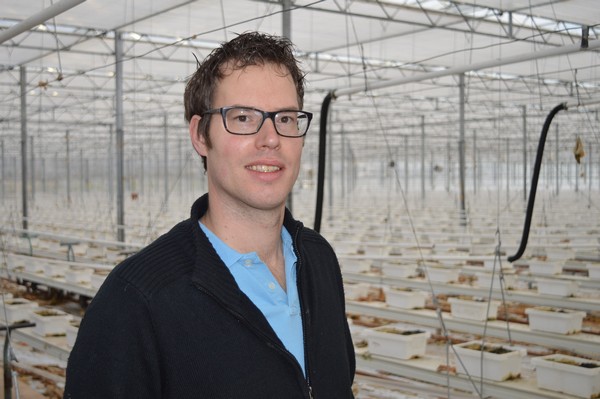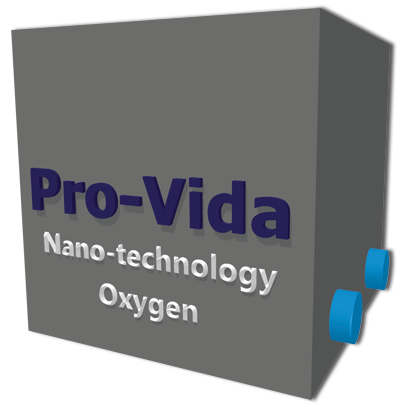From babbling brook to nanobubbles at Corné Stouten
Groentenieuws | 23 november 2020 | The article is translated from Dutch
Tholen - In Oosterland in Zeeland (The Netherlands), Corné Stouten grows cucumbers on 21,000 m². He believes in the power of the plant. This topic comes back to him daily. As long as a plant is resilient enough, it can prevent many pests and diseases.
The irrigation water receives special attention. Corné has been measuring the oxygen content of the water every now and then for years. At this company rainwater is used for irrigation. He saw that the oxygen level near the unit is around 100%. As time passed (particularly towards early morning) and the distance (through the pipe system) to the plant increased, the oxygen in the water dropped.
Corné: "We are not overly bothered by Pythium or other root fungi. We grow our cucumbers on perlite in containers. With this substrate you are less susceptible to those types of diseases anyway."
Sometimes the cucumber spot virus appears in his greenhouse. Very annoying. Extra attention to the irrigation water offers opportunities to tackle these problems.

Brook
Corné then started working on getting more oxygen into the water. He imitated, as it were, a stream through which the irrigation water ripples. In the wild, a higher oxygen content in the water will naturally occur. And that was the goal. Corné was already convinced of the importance of a high oxygen content in the irrigation water. The cultivation of hydroponic lettuce in North America reinforces that feeling. Corné laughs: "You know... If half of those conclusions are true, it's still great."
Tests are also underway at Wageningen UR to substantiate the importance of oxygen in irrigation water.
Corné is currently in the middle of crop rotation. He grows Proloog twice a year. The greenhouse is now empty. Everything is cleaned and prepared for the next cultivation.
Hygiene is of course essential for greenhouse horticulture. Now that everything is being spic and span for the next crop, he sometimes gets the feeling when he takes a look at the perlite containers that not many useful bacteria are being removed.
The containers are now entering their twelfth growing season. They are full of roots. Corné: "That root history is also a source of nutrition for many good minerals. There is no other way. But anyway... this will always remain a field of tension."
Up to 200% oxygen
He has now connected an installation to the watering system, Pro-Vida, which increases the oxygen content to 200%. The installation has only been running for a month. It is still early to draw conclusions from this. Corné has already noticed that the biofilm in the pipes is decreasing. The high oxygen content makes this slowly disappear.
It takes a while before it disappears completely. Corné is therefore cautiously positive: "Pro-Vida generates nanobubbles. These remain in the water for a long time. We even see the nanobubbles again after they return as drain water. Of course, it also takes some time to reap the full benefits of Pro-Vida. can pick. That has been taken into account."
Furthermore, the effect of Pro-Vida only becomes truly demonstrable as soon as temperatures rise. "As temperatures rise, the oxygen level drops. So Pro-Vida can prove itself in the summer."
Stouten Komkommerkwekerij vof
Maatje Harings Jobsweg 6
4307 NL OOSTERLAND
The Netherlands
Source: Groentenieuws




